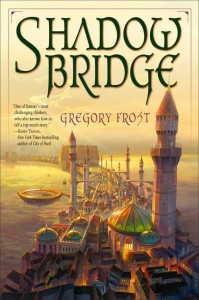Come to the KGB Bar for an evening of fantastical readings.

Come to the KGB Bar for an evening of fantastical readings.

Right now, the Kindle edition of my novel SHADOWBRIDGE is available via BookBub for $0.99

Sprung from a timeless dream, Shadowbridge is a world of linked spans arching high above glittering seas. It is a world of parading ghosts, inscrutable gods, and dangerous magic. Most of all, it is a world of stories.
No one knows those stories better than Leodora, a young shadow-puppeteer who travels Shadowbridge collecting the intertwining tales and myths of each place she passes through, then retells them in performances whose genius has begun to attract fame . . . and less welcome attention.
For Leodora is fleeing a violent past, as are her two companions: her manager, Soter, an elderly drunkard who also served Ledora’ s father, the legendary puppeteer Bardsham; and Diverus, her musical accompanist, a young man who has been blessed, and perhaps cursed, by the touch of a nameless god.
’Tis the season, it seems, for the return of Jack the Ripper, that figure cloaked in fog and mystery that never seems to stray far from our imaginations. A lot of writers of every stripe have written stories about him, including Harlan Ellison, Robert Bloch, my pal Tim Sullivan, and me for that matter (“From Hell Again,” a story originally penned for an earlier Ripper anthology edited by Gardner Dozois and Susan Casper). We are all in among other good company in the just-released BIG BOOK of JACK THE RIPPER, edited by Otto Penzler, and reviewed a bit on the International Thriller Writers’ The Big Thrill site. (And when Mr. Penzler says “big” he means 1000+ pages—this is the definitive gathering of stories and non-fiction pieces).

It’s been Grand Guignol ya.
-gf